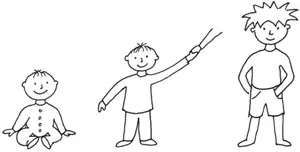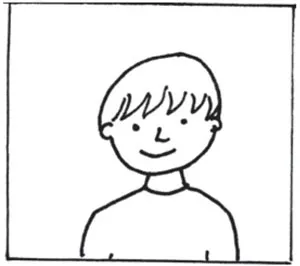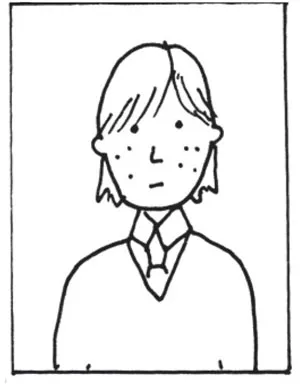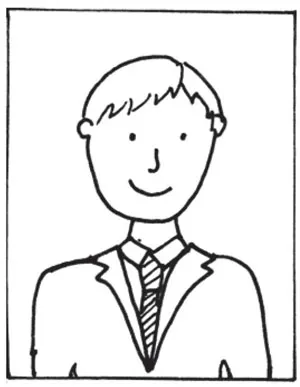![]() The Classroom
The Classroom![]()
Stories about growing up
I am still growing up
My teacher grew up too
In the school setting there are many new skills to learn, the majority of which will be learned in small steps with plenty of practice. A good deal of patience and perseverance are required to do this. What allows most children and adults to persevere with a sometimes daunting task, when there is slow or little progress, is the understanding that they have accomplished difficult things before over time.
Children with autism may have poor episodic memory, which means they struggle to recall their own past personal experiences (Bowler, Gardiner and Grice, 2000; Goddard et al., 2014). Episodic memory is important because it provides us with a sense of personal history, contributing to our autobiographical memory. In terms of having the confidence to persevere with a challenging task we often draw on our episodic memory to recall how we have achieved success in the past. Without this ability the child with autism may be less able to be mindful of his own successes and may instead focus on more recent failures.
Social Stories™ can help here to make this self-reflection feasible by effectively combining the past, present and future tenses together in one Story, reminding the child in a concrete and permanent way of his past successes. This is also critically important in developing resilience skills.
Earlier in Mark’s childhood I wrote a Social Story™ ‘I am growing up’ to redress this imbalance, which concretely demonstrated to Mark that as he grew up and transitioned between the early stages of life he was achieving success – he had learned how to sit, to walk, to run, to push a train and so on. It emphasised that he was growing up not just in size but also in achievements. This lifespan Story became the foundation to many Stories that have helped him, and others, understand their own progress and encouraged them to try new experiences. Even if a child does not achieve physical milestones at the same time as others, there is nearly always some progress that can be highlighted from his early years. This topic was revisited in the following Story ‘I am still growing up’, which describes how the child is on a continuing journey of development towards adulthood, which makes sense of learning new skills and taking on new responsibilities.
School years are a time of change for the child’s body as they physically develop into an adolescent. Reflecting on the changes their bodies have already gone through as they grew from baby to toddler to child helps highlight that at each stage of life the body changes in order to equip it for the next stage.
The child with autism may be unaware that the adults in his life have experienced childhood and adolescence too, which requires mindfulness of others’ experiences using theory of mind, which is working less well for him. The second Story included here describes that just as the child has grown up and is continuing to grow up, his teacher once grew up too. This provides social information around the teacher’s life experience, which builds the foundation for the later Story ‘What does my teacher know?’ By understanding that the teacher grew up too, the child gains information about growing up which may be helpful if he is struggling with adolescence. To produce this Story obviously requires the teacher to be understanding and co-operative and also to be happy to provide photos! They may also need to be prepared to help the child with any questions around growing up.
I am still growing up
I am 12 years old and I am still growing up. I have been a baby and I have been a child. I am now an older child and soon I will become a teenager.
When babies become children their body changes. This is part of normal growing up. Changes in the body help babies learn to walk, run and develop new fun skills like riding a bike, skateboarding or swimming.
As children become teenagers their bodies change again too. This is okay. These changes in the body help them get ready to be a young adult.
Becoming a young adult brings many new fun privileges and also some responsibilities. As children grow they become teenagers and then become young adults. This is a normal part of growing up.
I have been a baby and I have been a child. I am now an older child and soon I will become a teenager. One day I will be a young adult. I am still growing up and this is okay.
My teacher grew up too
Mr T is usually my teacher. When Mr T was born he was a baby. Mr T grew and became a child. Here is a picture of Mr T when he was 6 years old.
Mr T grew and became a teenager. Here is a picture of Mr. T when he was a teenager. In this picture he is about 13 years old.
Mr T grew and became a young man and now he is an adult. Here is a picture of Mr T as an adult.
Mr T has been a baby, a child, a teenager, a young man and now is an adult. My teacher, Mr T, grew up too.
![]()
I am learning to listen to the teacher
Children and young adults with autism often struggle to make themselves comfortable in our world. Because of their different social understanding they may not ask for help but instead seek resolution themselves. This is mainly because they may not be mindful that others have knowledge or experience that is different to their own. This frequently results in them displaying an unusual social response which can be labelled a ‘behaviour’. I have learned that there is a huge amount of information to be gained from observing the child and their response, and then questioning how they are experiencing the situation and why their response alleviates it for them. This then leads me to understanding their perspective better and helps me write more effective Social Stories™. Sometimes it leads me to a solution that is more sensory focused and a Story is not even required!
Mark, like many other children and young adults with autism, frequently avoids looking at the area of the face around the eyes. High functioning people with autism have described this sensation as uncomfortable or even unbearable. They frequently describe that in order to listen rather than looking at the speaker they need to look at a plain or unstimulating surface, like the floor or a wall. So for some, discomfort may be the reason they avoid eye contact. For others, it may be that looking at someone’s face is pointless because they do not receive useful social information from doing so, or perhaps they do not know that they are expected to do so.
Looking at the speaker to show attention is an important skill in school, college and the workplace. Without this skill a student may appear to be disinterested and switched off in a world of his own, when in fact he is actively trying to pay full attention. Teaching staff frequently mention that the student is not paying attention when he is staring out of the window or at the floor. Sometimes the student will be asked to look at the teacher or parent to show he is listening. However, looking at the adult may render the student incapable of listening at all. The most common time a student is requested to look at a teacher or parent’s face may be when he has done something perceived as wrong and needing correction. Frequently this is accompanied therefore by a raised voice and a stern facial expression. The result may be overwhelming for him.
Once Mark was able to tell me he found eye contact ‘uncomfy’ (his term for uncomfortable) this Story was written to validate the sensation he was feeling, acknowledge the difficulty this posed him and find a compromise that was respectful of this, but also sharing information on what others need to know. Describing looking at the teacher for a short time then looking away helped him remain comfortable while showing the teacher that he was listening. Asking him to count to thre...





